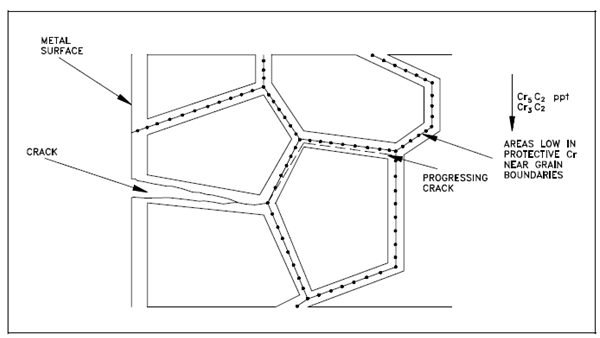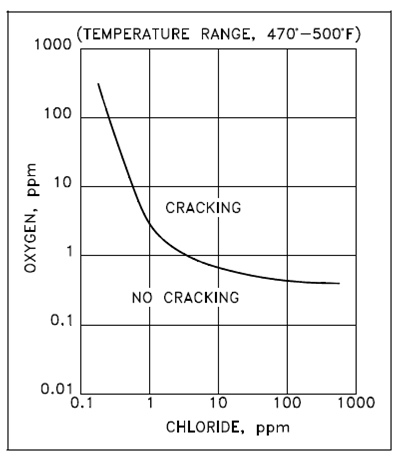Intergranular Corrosion Cracking:
A pressure of a tensile stress opens up intergranular cracks and accelerates additional corrosion. Chloride stress corrosion is a particularly significant problem with the operation of nuclear facilities since of the huge use of austenitic stainless steel, the inherent presence of high tensile stresses related along with pressurization. The chloride stress corrosion cracks have been known to propagate in austenitic stainless steel at stresses of about one-fifth yield strength along with chloride concentrations of less than 50 ppm.

Figure: Intergranular Corrosion Cracking
Tests displays in which the 18-8 stainless steels are susceptible to chloride stress attack while both the chloride ion concentration and dissolved oxygen focus are above certain values. A region of susceptibility for austenitic stainless steel is described in Figure. Remember that while dissolved oxygen is present at about 1 ppm, chloride stress corrosion cracking could be initiated at chloride ion concentrations near 1 ppm. Therefore, while the concentration of dissolved oxygen is extremely low, susceptibility to chloride stress corrosion cracking is decreased.
High temperature tends to reduce the time needed for chloride-induced cracking to occur, other than there appears to be no practical temperature limit below that cracking will not occur, given enough time and severe conditions. The curve in Figure is valid for temperatures within the range 470ºF to 500ºF.

Figure: Austenitic Stainless Steel